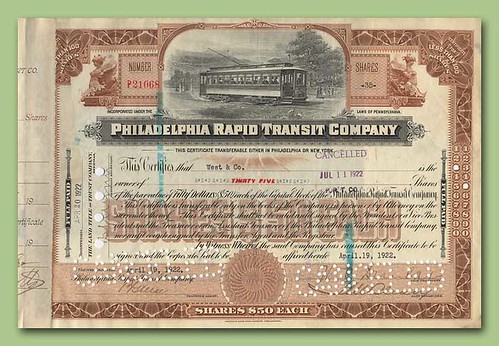Over at
Daily Kos Daneel aka DoDo over at
The Oil Drum Europe is doing a series on rail.
Part 1. Local Rail
Part 2. Rapid Transit
It's an interesting series and spawned a lot of discussion when some bus oriented folks tried to spread talking points from some libertarian think tanks including the Cascade Policy Institute. My favorites included the use of Portland's stat sheet to point out that buses were better than rail in operating hours and also someone arguing on behalf of the Bus Riders Union talking points. One person went so far as to say that each LRV costs $12 million which is ridiculous.
In any event i'm going to re-post some excerpts of my comments below...
...More stats from that ridership chart (
Portland, 2004) that matter... Lets look at subsidy per rider, .62 cents for rail to $1.20 for bus, the cost per passenger mile (because we are comparing two different service types) .68 cents for bus versus .29 cents per passenger mile for rail and Max carries 41% of the passenger miles!...
...his argument really revolved around the thought that you could replace a whole system with buses, but then you look at how much they cost per passenger mile and staffing those some 6,000 buses would have broken the operating bank...
...So lets look at the cost of buses versus trains in real costs...just vehicles. In 2007 your transit authority buys two LRVs for six million. It carries
464 passengers per two car consist with one driver. 60 foot articulated buses (nothing longer is legal in the US nor should it be if it is on the same streets as cars) carry
90 passengers max. So to carry the load of the LRT you need about 5 buses. Those 5 buses cost about a million each, each need a driver and have to be replaced in 12 years which means in 24 years you have spent 6 million on two LRVs and 10 million on 10 buses not to mention inflation for the 12 year bus replacement. Then, you have the costs of paving the roads, which in the case of the Orange Line in LA are already messed up (
photo proof) But no one ever adds those costs in. Nor do they mention that rail attracts
34-43% more riders...
...Let's also look at energy usage...The Department of Energy Oakridge Lab puts out data every year. The most recent shows rail on top again. 4,318 BTU per passenger mile for bus versus an average of 2,978 BTU per passenger mile of any rail (Amtrak, Rapid Transit and Commuter Rail)...
And so on and so forth. Go ahead and check out Kos. If you aren't a diarist over there you might want to sign up so you can take part in the discussions. However it takes a week I believe before you can post because they don't want folks to just make up names and jump on.




